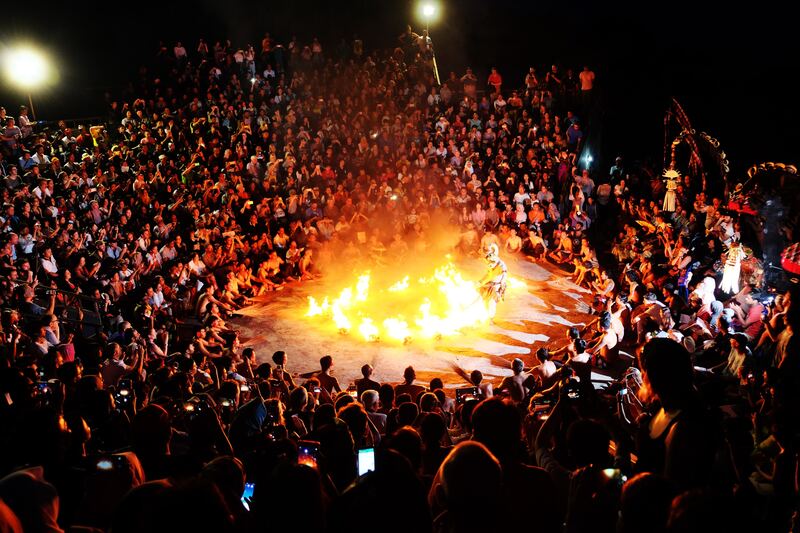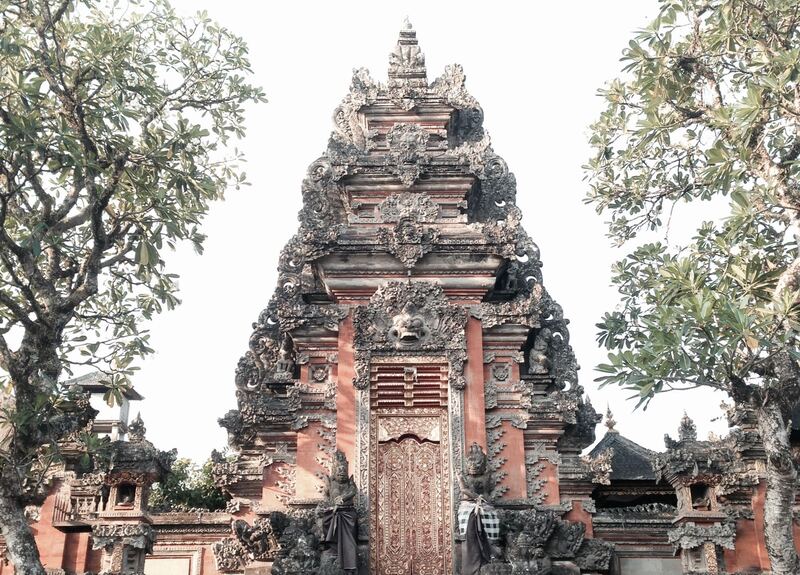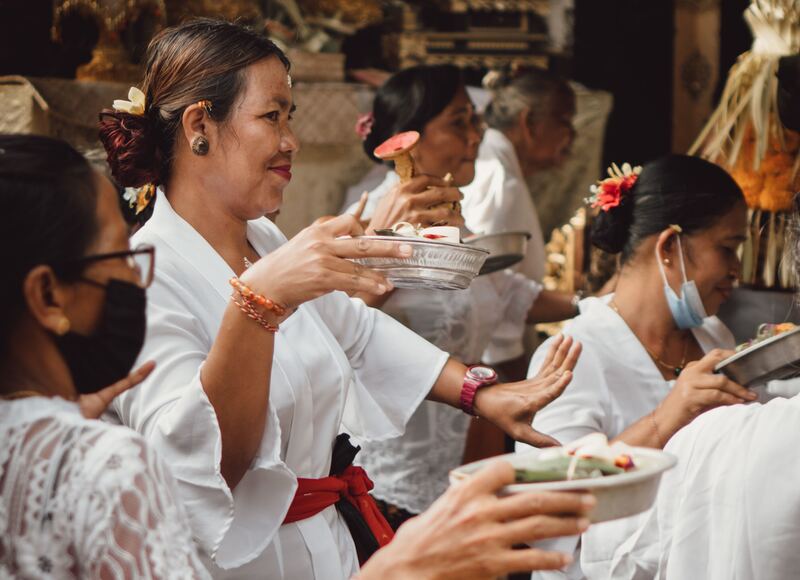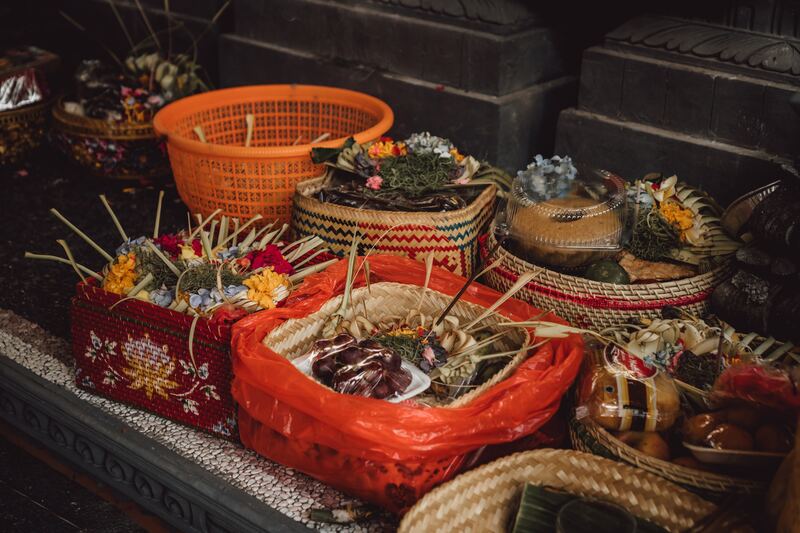Frequent visitors of Bali are undoubtedly familiar with the island’s rich and distinct culture, a culture profoundly influenced by the dominant religion of Hinduism.
Bali stands as the only Indonesian island where Hinduism takes precedence, and its influence permeates every facet of Balinese life, including art, festivals, rituals, and daily practices.
Balinese Hinduism, known officially in contemporary times as “Agama Hindu Dharma’‘ according to the Indonesian Ministry of Religion, is a unique amalgamation of Hinduism and indigenous animist customs that predated Hinduism’s arrival in the Indonesian archipelago. Hinduism arrived around the first century CE when it adapted and developed uniquely in Bali. Balinese Hinduism incorporates Indian spiritual concepts, honours Indian legends, and features its own distinct festivals and customs centred around ancestral spirits and unique rituals, including animal sacrifice, that are uncommon in India. Historically, this faith bore several names, including Tirta, Trimurti, Hindu, Agama Tirta, Siwa, Buda, and Siwa-Buda. Among these designations, “Tirta’‘ and “Trimurti’‘ draw inspiration from Indian Hinduism, representing a sacred journey towards spiritual enlightenment near holy waters and the trinity of Brahma, Vishnu, and Shiva, respectively. This syncretic tradition can be seen across multiple aspects of Balinese culture.
Dance and Performance Arts
Balinese traditional dance and music serve as profound conduits for the expression of Balinese values, cultural identity, and artistry, deeply interwoven with Hinduism. For the Balinese Hindu community, these art forms hold a sacred role, serving as mediums to forge a deeper connection with the gods.
Balinese dance and performance arts, such as the Legong, Barong, and Kecak, are often based on Hindu mythological stories. Dancers portray Hindu deities and characters from the Hindu epics, such as the Ramayana and Mahabharata. These performances not only serve as entertainment but concurrently as a collective religious and cultural purpose. Balinese culture deeply reveres the enigmatic powers of nature, which are considered to be beyond human comprehension. The Balinese people are guided by the fundamental principle of maintaining a harmonious relationship among all elements of the natural world. This ethos serves as the driving catalyst for the preservation and development of their traditional music and dance forms.
Art and Architecture
Hinduism has greatly influenced Balinese art and architecture. This can be observed in the Balinese temples, or pura, remarkable architectural creations designed in accordance with Hindu principles. These temples are structured as open-air places of worship enclosed by walls, with a network of intricately adorned gates connecting various sections. Within this walled compound are multiple shrines, meru (towers), and bale (pavilions). The temple’s layout follows the Tri Mandala concept of space allocation, consisting of the Nista Mandala (outer zone), Madya Mandala (middle zone), and Utama Mandala (the holiest and most sacred zone). These temples are adorned with intricate stone carvings, statues, and paintings, all depicting deities and epic stories from Hindu mythology. The artistic motifs often reflect Hindu cosmology.
Religious Festivals
Bali is famous for its vibrant and elaborate religious festivals that are deeply rooted in Hindu rituals. Festivals such as Galungan and Nyepi are celebrated with great enthusiasm. During these festivals, communities come together to perform religious ceremonies, traditional dances, and music, all inspired by Hindu traditions.
To illustrate, one can observe the “Ogoh-ogoh” statues crafted for Bali’s Ngrupuk parade, held on the eve of Nyepi day. These statues typically depict mythological figures, often of a demonic nature. Their primary purpose is to purify the natural environment by absorbing spiritual pollutants resulting from human activities. “Ogoh-ogoh” represents Bhuta-Kala, with “Bhuta” meaning eternal energy and “Kala” meaning eternal time in accordance with Hindu teachings. These statues symbolise the uncharted potential of nature, emphasising the responsibility of humanity to sustainably manage natural resources without causing harm to the environment. The parade culminates with the burning of “Ogoh-ogoh”, marking a purification ritual in preparation for the new year.
Ceremonies and Rituals
Hindu ceremonies and rituals are an integral part of Balinese life. These include life-cycle ceremonies such as weddings and cremations, where Hindu rituals are meticulously followed. The art and decoration associated with these ceremonies are deeply influenced by Hindu traditions. In Balinese society, religious rituals are intricately intertwined with artistic and cultural expressions, making a religious ceremony incomplete when devoid of these creative elements.
Religion, art, and culture are seamlessly fused in the lives of the Balinese, forming an integral part of their daily existence. Many travellers to Bali have likely come across street-side offerings known as “canang sari”. Roughly translated as “baskets of essence”, these small, open boxes, intricately crafted from palm or banana leaves, take on an origami-like structure and are typically filled with fresh and colourful flowers. The selection of each flower carries specific significance, and some “canang sari” may also contain money, a bit of food, or a burning incense stick. Hindu households and temples in Bali place new “canang sari” offerings every day, and you can find them adorning sidewalks, streets, stairwells, ledges, and temples.
These offerings hold a sacred role in expressing gratitude for the present and conveying wishes for peace and abundance in the world. They symbolise the Balinese people’s unwavering devotion to their deities. Crafting these “canang sari” involves a daily ritual of self-sacrifice, reflecting a deep sense of thankfulness and meticulous attention to detail. Through its creation, the Balinese exhibit their generosity, faith, and profound dedication, which permeate every aspect of their lives.
Delving into the profound influence of Hinduism on Balinese culture and art is essential for understanding the intricate tapestry that defines the island. Bali’s unique and rich heritage is the product of a harmonious coexistence of faith, tradition, and artistic expression. By examining the multifaceted ways in which Hinduism has left its indelible mark on the island, we gain a deeper appreciation for the reverence and devotion that characterise Balinese culture. Their art, dance, music, architecture, and rituals are not mere expressions of creativity but profound channels for spiritual connection. The interplay between these elements creates a vibrant and distinct cultural landscape, where spirituality permeates every facet of life. It is a testament to how deeply spirituality can shape a society’s creative and cultural practices.




